Electric cars are getting most of the buzz these days, but as much as I like them (and I DO like them), I think for the next twenty years a plug-in hybrid has a LOT going for it, and I like the take this opportunity to explain why it’s not a bad idea. My son now has a Tesla Model-3, but before that he had a Chevy Volt for many years, and when I drove it a few times, I was really impressed.
Parallel Hybrid: The engine or the motor can each power the wheels directly as needed.
Series Hybrid: The engine only powers a generator, a battery powers a motor that drives the wheels.
Plug-In Hybrid: Its an electric car that has a smaller battery than normal so the price and the weight can be lower. Most trips are not long distance, but if you ever need to drive on a longer trip, the auxiliary engine/generator will keep the battery topped off.
_____________________________________________________
A Little History
From the earliest days of the gasoline-powered automobile, there were also experiments with steam and electricity for power. In hindsight, we already know which one will rise to dominance, but before WW-One, there were a surprising number of steam and electric cars. Until Ford created the payment plan in 1923, cars were purchased by paying cash for the full amount. This made cars the “plaything of the rich” until Ford began selling the Model-T. The Doble Steam car and the Owen Magnetic (shown below) had a price that exceeded $100,000 in today’s 2022 dollars.
The 1909 gasoline-powered Model-T was introduced at $825 and they sold over 10,000 units in that first year. Each year they improved and the price went down. In 1916, Ford sold over 500,000! The issue that made wealthy customers pay more for steam or electric was the hand-crank to start the engine, and operating the clutch-and-transmission.
The main drawback to electric cars was the short range of the heavy batteries, and long recharge time. Steam cars typically burned kerosene, and could be refueled as quickly as a gasoline car. Soon after the invention of the electric car, some manufacturers added a separate engine-generator to extend range. This kept the benefits of the electric drive, such has great hill-climbing torque and the lack of shifting with a clutch and transmission. However, even after reducing the size of the battery to the minimum in order to lower weight and reduce cost, these pioneering hybrids were still too expensive.
That being said, by the start of WWII in 1939, the diesel-electric series-hybrid drivetrain was taking over train locomotives, military submarines, and it was even used in a few tank designs. So, lets take a look at some of the early hybrid automobiles, and the engineers who designed them.
1896 Armstrong-Roger-Dey
Harry E. Dey was a mechanical/electrical engineer, and he designed and built his own electric-powered carriage in 1895, which brought him to the attention of the American Mechanical Carriage Company in New York City. This was a start-up company that had purchased a Roger Motor Carriage from Paris (Émile Roger was a bicycle manufacturer who had purchased the second Benz-wagen ever built in 1888), and AMCC wanted Dey to reverse-engineer it so that something similar could be manufactured in the USA. Armstrong Manufacturing in Bridgeport Connecticut was chosen to build the prototype.
The French Roger engine was a massive 2-cylinder water-cooled unit at 6.5L, and weighing 400-lb. It could run on kerosene or gasoline. There was no radiator, the water simply boiled away and had to be re-filled each trip. It could run with one cylinder to save on fuel, or use 2-cylinders when under a heavier load, such as climbing a hill. Max power was 4-HP at 350-RPM’s. It was a flat-boxer horizontal-piston configuration with a central exposed crankshaft.
Dey argued for a full-electric version, but the short range of the heavy lead-acid batteries forced a compromise that added an electric drive to the existing engine. The heavy flywheel was cleverly modified to act as a dynamo-style of generator, and it also acted as a starter motor, 16 years before Cadillac. Although, the Armstrong did not sell, so…Cadillac can still claim to be the first ‘production’ electric starter.
When the Roger carriage was using only the original engine, start-up was difficult with a hand-crank. Adding the electric drive made starting the engine easy, since the dynamo/flywheel could operate as a motor or a generator. Also, the lead-acid battery could move the vehicle short distances with the electrical drive alone, since Dey had cleverly placed the clutch between the engine and the flywheel.
The 1896 Armstrong gas/electric hybrid car
At a time when similar cars had carbide arc lamps, the Armstrong had electric lights for driving at night, and a steering wheel instead of the more common tiller. The gear-shifter and reverse were operated by a smaller wheel just under the steering wheel. The dynamo was also wired to act as a regenerative magnetic brake to slow down, and this was at a time when “brakes” were typically lever-operated friction shoes rubbing on the tread of a wheel.
This was a parallel hybrid, and the lead-acid batteries were located under the seats. The main drive was the engine, and not the electric motor. The clutch for the 3-speed transmission did not require a foot pedal, because it was electrically disengaged when the shifter was moved. By having the electric drive, Dey was also able to easily give the vehicle a reverse, and as a result of the design’s placement of the clutch in front of the flywheel, the electric portion had 3-speeds in forward or reverse, while the engine only had three speeds in forward. The battery could supplement the 4-HP engine for a very short time, but the Armstrong would need to be driven soon after as an “engine-only” to re-charge the small battery.
The prototype was completed, but the development bankrupted the small company, so that only one was made. Dey went on to manufacture electric cars in 1917 as the Dey Electric Co. with Charles Steinmetz in New York, but the popularity and low price of the Ford Model-T ended that.
[Page 20, March 1896, “The Horseless Age” magazine. This link starts at page 1, scroll down to page 20]_____________________________________________________
1900 Lohner-Porsche “Semper Vivus“
Ferdinand Porsche was a young man from Austria, and he taught himself to be an electrical engineer when no classes existed. You might be familiar with the Porsche 356 sports car from 1948. It was called the “356” because it was the three-hundred-and-fifty-sixth design that Ferdinand had created. When he was only 23 years old, he designed the “P1”, his first paid design commission. It was an electric car for the Egger-Lohner company, and they designated it the C.2 Phaeton, which is an old term for a convertible-top carriage.
The very first prototype P1 had four seats in order to qualify to enter a race in France (which it easily won). It was assumed that these races were “advertisements” for new cars. Wealthy purchasers of the production models would need a chauffeur to drive them, which required more seats.

The battery was a Tudor brand, 42-cell lead-acid battery, 84V, 120 amp hours, 1103-lbs. Range was 49 miles, cruise speed was 15-MPH, with a temporary peak of 21-MPH.
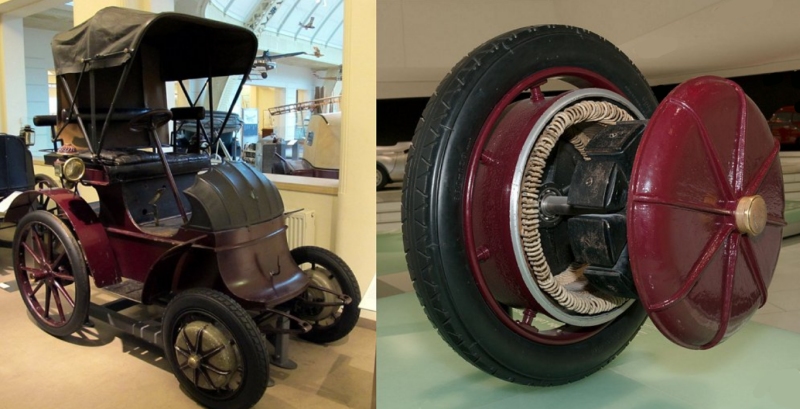
This article is about hybrids, but I included the C.2 Phaeton because it gave young Porsche a taste of the evils of lead-acid batteries, with their heavy weight, short range, and long recharge time. The Lohner-Porsche hybrid debuted at the Paris Exposition in 1900. He named it the “Semper Vivus” which is Latin for “Always Alive”, a reference to how you never had to worry about the batteries “dying”
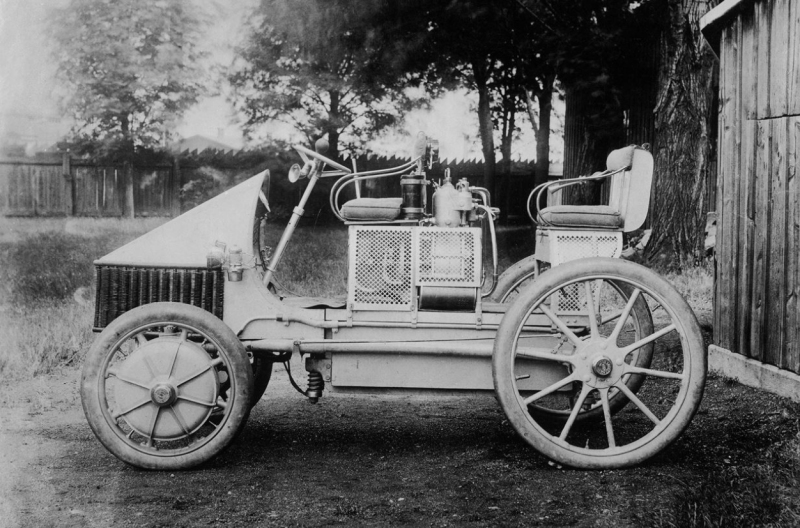
Two small gasoline engines spun two small generators, which drove two front-wheel hubmotors. This car had the hill-climbing torque and “no clutch” ease of an electric drive, with the range and refueling speed of a gasoline car. The battery consisted of 44 lead-acid cells, delivering roughly 88V, and capable of 80A peaks. The battery weighed 420kg / 926-lb
The engines were each a single-cylinder 700cc from DeDion-Bouton in France. They were water-cooled with a cast aluminum block. The car used an electric water pump and a copper radiator mounted in the front. In spite of its advanced features, it was also expensive, and only 65 were known to have been built and sold…
A running exact replica was built, and the specs can be found by clicking here.
_____________________________________________________
1916 Woods Dual-Power
The 1916 Woods Dual-Power Model 44 Coupe from Chicago had a common 4-cylinder internal combustion engine of 69-cubic inches of displacement, as well as a large in-line electric motor. This makes it a “Parallel hybrid” vaguely similar to the Toyota Prius. The engine would drive the car through the central shaft of the motor, allowing either one to power the car.
Below 15 mph (24 km/h) the car was electric powered only, and above that speed the conventional engine started and took over to take the vehicle to a maximum of around 35 mph (56 km/h), while also recharging the battery pack by the motor converting to generating electricity. As with the previous hybrids listed above, the motor doubled as an electric starter. The large battery used 24 lead-acid cells to provide 48V.
The electric drive was well appreciated by customers on cold Chicago mornings in the winter, and that also made the easy electric start of the engine very desirable. Using a common hand-crank was awkward under the best of circumstances, but on a bitterly cold snowy morning, it would be miserable.

I was pleased to find this great picture above, instead of only relying on a diagram of the system.

The Woods Dual Power had a drive-train based on a patent by Roland Fend, using a clutch between the gas engine and the electric motor, allowing the engine to also drive the car through the armature shaft of the motor. With the clutch disengaged, the motor could drive the car electrically without spinning the engine.
The Woods Motor Vehicle Company, founded in 1898 by Clinton E. Woods evolved into the American Electric Vehicle Company, and they produced eight different models. By 1916 interest in electric vehicles had begun to fade. In response, Woods began development of this hybrid car to increase range.
Owners were pleased with its performance, but it’s rapid demise was simply from the $2,700 price, at a time when a four-seat Ford Model-T was roughly $400. A $2,700 price in 1916 was equal to $73,000 today, and there was not yet a payment plan available to the public.
_____________________________________________________
1916 Owen Magnetic
The Owen Magnetic is a fascinating and advanced hybrid car, but it sold poorly due to the $6,000-$9,000 price. The R.M. Owen & Company of New York funded the prototype and built the first 250 cars there. In December of 1915, Owen merged with the Baker Motor Vehicle Co. and their partner the Rauch & Lang Carriage Co. so production was moved to the Baker facilities in Cleveland Ohio.
Justus B. Entz of Cleveland Ohio had previously been an electrical engineer for Thomas Edison’s laboratory in New Jersey, and he designed this clever system. As with the previous hybrids, the electrical motor would function as the starter for the engine, and was also used as a variable magnetic brake. The design uses two electrical machines inline. The first device was a dynamo/generator just behind the engine, and just behind that generator was an electrical motor.
It was advertised as having a magnetic “clutch and transmission” of sorts, which had a smooth engagement and in theory would never wear out. The patent is clear that the strength of the magnetic field of the generator is varied by the controls, and that is what raises and lowers the power going to the rear motor. The primary drive unit was the engine, but the battery and motor could augment the engine when accelerating or climbing a hill.
It was a true series-hybrid, where the engine only turns a generator, and never directly drives the wheels. The battery was a 24V lead-acid unit, and could move the car in forward or reverse by itself. Roughly 700 of the Owen Magnetics were built in the Cleveland factory. The gasoline engine was a Buda inline 6-cylinder of the conventional type, and the max road-speed was listed as a respectable 60-MPH
The Owen was marketed as a luxury automobile, and the choice of the more expensive 6-cylinder engine was on purpose. A large 4-cylinder engine would have cost less and provided the same power, but a six cylinder has smoother primary and secondary vibrations. By using a 6-cylinder engine that essentially ran at a constant speed, it resulted in a car that was very smooth and quiet. The electric drive had smooth acceleration to higher speeds, rather than the jerkiness of using a common clutch and a non-synchro manual transmission.
In fact, the surprising number of sales might be credited to the fact that the electric drive on this luxury car provided an “automatic transmission” at a time when even Rolls Royce’s and Cadillac’s had a clutch and manual transmission.
____________________________________________________
As we stated before, after WW-One in 1918, Ford Model-T sales dominated the car scene, with Chevrolet, Dodge, Studebaker, and Oldmobile occupying the middle-class purchases. Low-volume luxury cars such as the Daimler, Pierce-Arrow, and Rolls-Royce are too numerous to list here. In 1912, Cadillac produced a gasoline model with an electric start, so by 1918, this feature along with others began to cause steam cars and electric car sales to wither…
If you enjoyed this section on vintage hybrids, there are many more, but I couldn’t find good pictures or a good description of the details. If you like to google, here are more pre-war hybrid names:
1902 Jenatzy cab, 1902 Columbia, 1904 Krieger, 1904 Milde, 1905 City & Suburban, 1914 Galt Gas and Electric, 1919 Dey, Munson, Jeantaud, Piper, Symetric-Arbel…
_____________________________________________________
What about now?
I was very sad to read that the Chevrolet Volt Plug-in Hybrid Electric Vehicle / PHEV, and the Honda Clarity plug-in hybrid are both discontinued. These models acted as an electric car for a short distance, and the gasoline engine only came on when you needed to go on a longer trip. You would plug it in at night to top-off the battery. One problem that this type of hybrid addresses is the lack of public charging stations when driving on a long trip.

I have seen Tesla EV’s charging at hotel parking lots, but sometimes there are several cars waiting to charge at popular locations. The discontinued Chevy Volt was listed as having 38 miles of range before the engine-generator needed to start-up. To be fair, most Tesla cars have over 300 miles of range, and are intended to top-off while you are sleeping at night.
_____________________________________________________
Toyota Prius
In the 1990’s California was passing increasingly stringent emissions standards for cars. California is such a huge car market, that car manufacturers began designing all of their cars to meet those regulations, instead of having two types of emissions equipment on their cars. One of the results was that the Toyota company designed the Prius Hybrid car. The first Prius model that was available in the US used Nickel-Metal Hydride batteries (NiMH), which were a huge improvement over lead-acid batteries. It was a parallel hybrid, and the details of the system were focused on reducing emissions.
In 2009, Toyota upgraded the Prius to lithium-Ion cells, and an optional model had larger 5.2-kWh battery. The EPA tested it and they listed it’s “electric only” range at 11 miles at the time, and that range has recently been increased to 25 miles. This means that for short trips, the gasoline engine never needs to turn on at all, you just plug in the car to a charger when you get home.
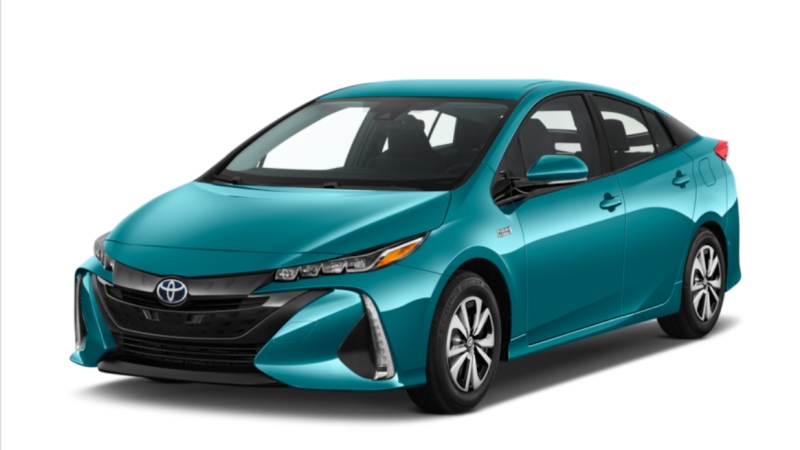
25 miles of “electric only” range
Price is $29,000-$35,000 depending on features.
The battery is 351V of lithium-ion, and the engine is a 1.8L 4-cylinder
_____________________________________________________
Toyota RAV4
The RAV4 is a popular model, and the PHEV “Prime” version is one of the best-selling plug-in hybrids due to the significant 42-mile range rating for it electric-only mode. However, that longer range comes with less luggage space, and a higher price.
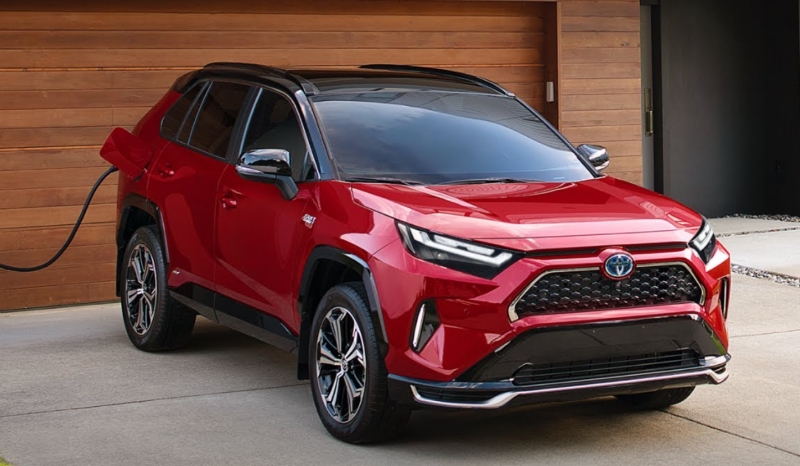
42 miles of electric-only range
$31,000-$45,000
2.5L 4-cylinder, plus two electric motors. Peppy acceleration plus AWD
Constantly Variable Transmission / CVT on front.
_____________________________________________________
Ford Escape PHEV
Ford has made several EV’s and hybrids, so the PHEV version of the electric Escape is something consumers have been curious about.
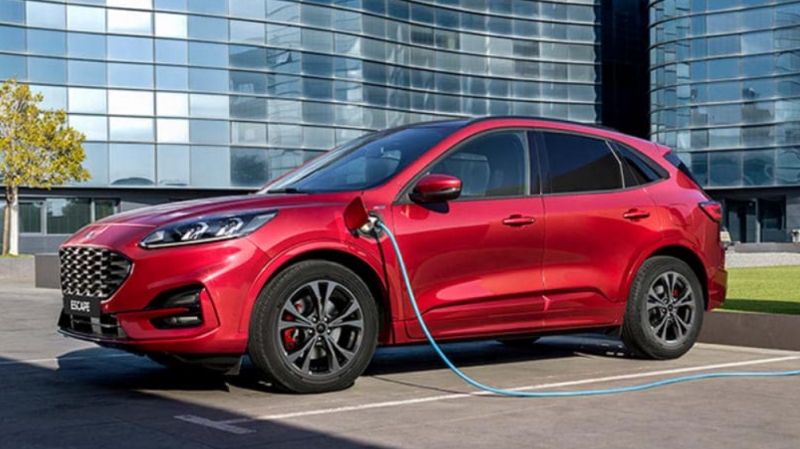
32 miles electric-only range
$36,000-$41,000
2.5L 4-cylinder, CVT, FWD only
_____________________________________________________
Lexus NX 450h PHEV
Lexus is a division of Toyota, and in spite of the higher price of the 450h over the RAV4, the Lexus PHEV seems to be selling well. That extra price does get you a faster car, delivering 304 horsepower and a 6.0-second 0-60 mph time. When in electric-only mode, you can reach 80-MPH. However, using hard acceleration and higher speeds will shorten the electric range of any PHEV.
Lexus produced their first hybrid in 2005, the “RX 400h”.
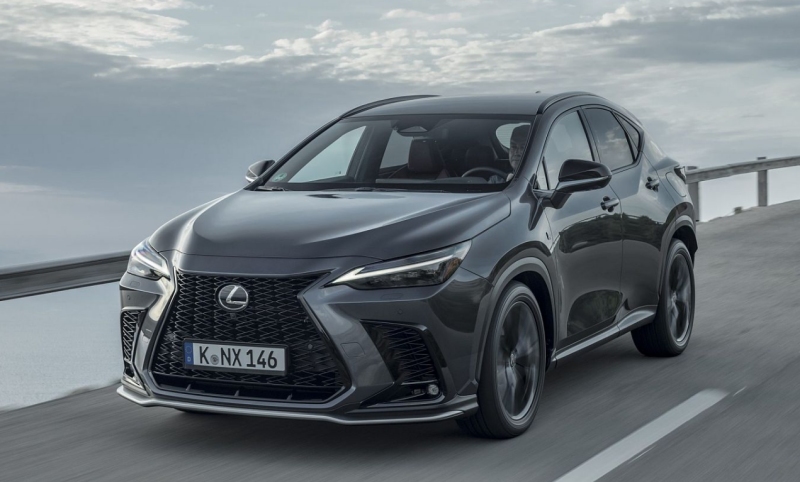
36-42 miles of electric-only range
$57,000-$61,000
2.5L 4-cylinder engine
_____________________________________________________
Chrysler Pacifica PHEV Van
This may look like a large SUV from a distance, but it’s a van with sliding side doors. The PHEV version has AWD with traction control.

32-37 miles electric-only range
$47,000-$60,000
3.6L V6 engine
_____________________________________________________
Hyundai Ioniq PHEV
If you search “Hyundai Ioniq”, you might accidentally see their stunning EV, the Ioniq-5 (click here), but that’s a pure electric EV with no back-up generator.

29 miles electric-only range
$28,000-$34,000
Conventional auto trans, 6-speed (no CVT), FWD
OR…they have two other body styles with their PHEV drivetrain
Santa Fe SUV, 31 miles, $41,000, AWD
Tucson SUV, 33 miles $36,000, AWD
_____________________________________________________
Kia Niro (Hyundai parts)
The Niro uses the Hyundai drivetrain, so just be aware of that.
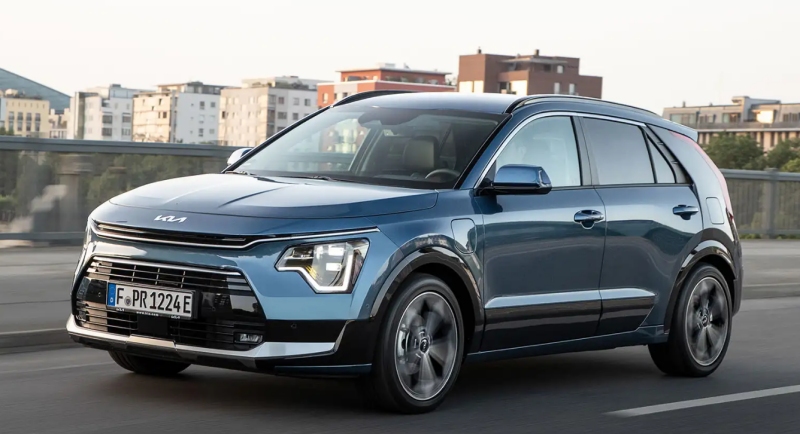
26 miles electric-only range
$30,000-$36,000
1.6L 4-cylinder, FWD
_____________________________________________________
Mitsubishi Outlander PHEV

24 miles of electric-only range
$38,000-$43,000
2.4L 4-cylinder
_____________________________________________________
Subaru Crosstrek PHEV
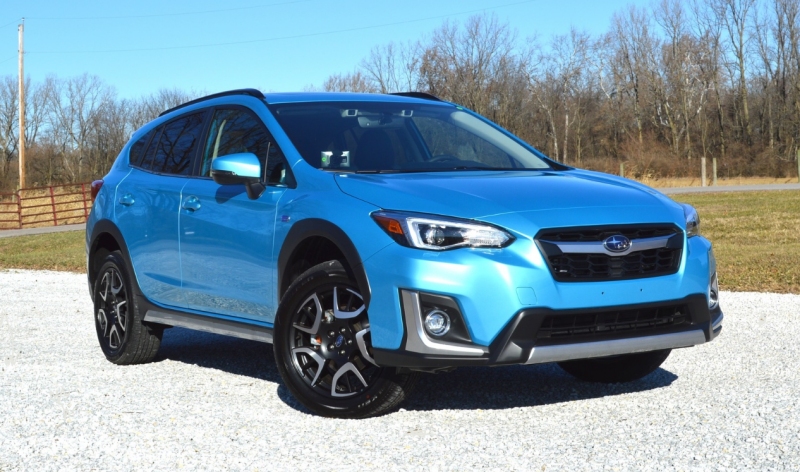
17 miles of electric-only range
$37,000
High NHTSA crash rating
2.0L flat-4 cylinder, AWD
_____________________________________________________
The models above have the highest sales due to the balance between performance and price. If you think you might want a plug-in hybrid (PHEV), and you can spend quite a bit more…here are some names for you to research.
Ferrari SF90 Stradale
Koenigsegg Regera
Porsche Cayenne / Panamera
Audi A7 55 TSFI e Quattro
Mercedes C300e PHEV
BMW 530e
Lincoln Corsair Grand Touring PHEV
Lincoln Aviator Grand Touring PHEV
Jeep Grand Cherokee 4xe
Volvo S90 Recharge
_____________________________________________________
Written by Ron/spinningmagnets, September 2022
Source link








